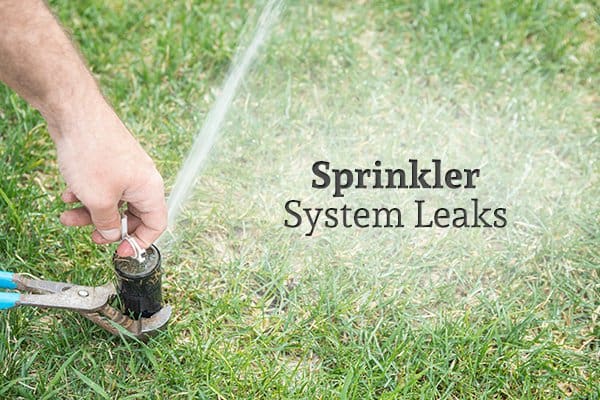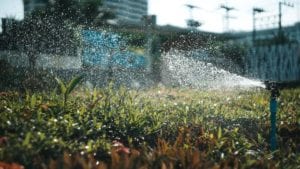
A sudden spike in your water bill is a classic sign of water leaks in or around your home. If you haven’t been using more water than usual lately, your first critical step is to locate the source of the leak.
Determining the Source of Your Water Leak
- Turn off the water supply to your home and check your water meter.
- If the meter’s needle continues to register water use with the water turned off, then you probably have a leak in your plumbing.
- The next step is checking for signs of a leak in your indoor plumbing, but if there are none, the leak is probably somewhere in your sprinkler’s irrigation system.
4 Steps to Take if Your Leak Source is the Sprinkler Irrigation System
PRO TIP: To find the leak, it’s a good idea to check your irrigation controller first, valves second, and sprinklers last. Use brightly colored irrigation flags to mark areas you suspect may be leaking.
1. Check for Irrigation Controller Problems
- Although irrigation controllers do not leak, they contain an electrical clock that controls your spring valves.
- The clock triggers the release of water through sprinkler valves and keeps sprinkler valves open for a predetermined time period.
- Check the controller’s programming to make sure it hasn’t changed or returned to a default setting that increases water usage.
- In some cases, irrigation controllers may keep sprinkler systems running unnecessarily for hours, which can significantly increase your water bill.
2. Check Your Sprinkler Valves
- Valve boxes should be dry, not flooded.
- Wet valve boxes may indicate loose wiring, water leaking due to damaged fittings, or worn parts.
3. Leaky Sprinkler Stations Signs
Checking sprinkler stations requires the assistance of another person if you have a large irrigation system.
One person needs to remain at the controller so they can turn individual stations off and on while the other person checks the sprinklers as they are turned on.
The “spotter” should look for these signs of leaks:
- Flooding around the sprinkler’s base may indicate malfunctioning valves that are not shutting off properly.
- Water sprays/geysers usually indicate missing spray heads.
- Water spraying between sprinkler heads could mean you have a cracked lateral line.
- Water laying in the grass between sprinklers usually indicates a steady leak coming from an underground pipe.
- Water spurting from a sprinkler’s base could mean that a seal is broken where the riser or nozzle connects to the underground supply line.
4. Ensure Sprinkler Heads are Aligned
- Although misaligned sprinkler heads are not technically a type of leak, check to see if your sprinkler heads are spraying water exactly where you want them to spray.
- If you own a business that is closed on the weekends or if you’re going to be away from your residence for more than a few days, always check your sprinkler heads before leaving.
- Loose heads may suddenly deviate significantly off their mark if left unchecked for long periods of time.
Sprinkler System Leak Detection Tools
Leak detection tools are available to help you locate a sprinkler system leak, but using them can be expensive, time-consuming, and they may not successfully detect the leak. Tools include water leak microphones (sensory rods you wave over the ground that enhance the sounds of water gushing through pipes) and electrical acoustic kits. When underground pipe leaks are large enough, you may hear water gushing even without a sensory rod.
Save Time and Money by Hiring a Professional
If DIY leak detection isn’t your thing, get in touch with experienced plumbing and sprinkler technicians who have in-depth knowledge and industry-specific tools to quickly find sprinkler leaks and repair them without damaging your lawn. They can also provide regular maintenance and inspections to ensure that your sprinkler system works properly and your lawn stays green, lush, and beautiful.
To get your sprinkler system expertly maintained or repaired, call HEB Plumbing & Sprinkler today.
